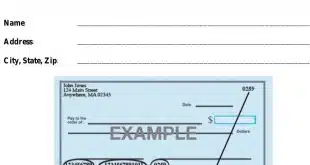While electronic payment methods continue to gain ground against paper-based payments, consumers show widely varying attitudes toward specific types of electronic methods, according to a recently released report from the Federal Reserve Bank of Boston. The paper, which the Boston Fed published last month and is based on a representative consumer survey conducted in the fall of 2008, finds that consumers now make more than half?52.9%–of their monthly payments with a payment card. The cards examined include credit, debit, and prepaid cards. The survey also looks at payments via online banking and via biller sites as well as cash, checks (both standard checks and travelers checks), and money orders. “Traditional paper-based payment instruments have been giving way to new payment instruments that have emerged from innovations in information and communication technologies as well as from innovations in financial markets,” say the authors of the Fed report, which is entitled “The 2008 Survey of Consumer Payment Choice.” One of the authors, Scott Schuh, director of the Boston Fed's Consumer Payments Research Center and an economist at the bank, tells Digital Transactions News that “it appears the use of paper-based instruments has dropped pretty dramatically in the last few years.” But consumer preferences vary widely with respect to particular types of electronic payment, the report shows. Consumer adoption of debit and credit cards, for example, stands at 80.2% and 78.3%, respectively, but just 17.2% have a prepaid card. Meanwhile, adoption of biller Web sites to pay bills?what is usually called the biller-direct model for electronic bill payment?is far ahead of payments made via online banking sites, with an adoption rate of 73.4% compared to 52.5%. Adoption of contactless technology also shows promise. Some 21.7% of consumers have adopted contactless debit cards, while just over a quarter hold a contactless credit card. Some 9.5% report having adopted a contactless toll-payment instrument. Overall, those who have adopted any kind of contactless payment device stands at 44.3%, a figure that may seem more robust than critics of contactless payment have supposed. The report, though, does not look at actual usage of contactless devices. While the report does not touch on contactless payments via mobile phones, it reports that 8.2% of consumers are now using mobile banking to access their accounts, compared to 70.7% for online banking and nearly 85% for ATM or debit cards. Besides adoption, actual usage also varies considerably. For example while nearly 70% of consumers use a credit or debit card each month, just 6% use a prepaid card. Holders of prepaid cards, meanwhile, reload value on their cards an average of 31 times per year. Similarly, usage varies widely between payments via online banking and through biller sites, with 70.6% reporting usage of the latter each month, more than double the usage rate of online-banking-based bill payment. As for payment share, while cards now account for 52.9% of all payments in what the report calls a “typical month,” debit cards now enjoy a distinct advantage over credit cards, with a 31% share of transactions compared to 21.3%. Indeed, credit cards account for a slightly smaller share than cash (22.7%). Prepaid cards register under 1%. “There seems to be a lot of talk that prepaid cards are growing in popularity, but when we do these surveys we find that isn't necessarily so,” says Schuh. He says prepaid may score low with many consumers who don't always understand that certain cards they use–such as transit cards–are prepaid products. Worries about data breaches and fraud also influenced responses. When asked to rate certain payment characteristics in order of importance, consumers ranked security No. 1, with 31.6% citing this as most important. Ease of use comes in second (28.7%) and “control over payment timing” a distant third (almost 11%). Meanwhile, those who may regard paper instruments as moribund may be surprised that they still account for better than one-third of consumer payments in a month (36.5%), with cash leading the way and checks and money orders accounting for a 13.7% share. The Boston Fed report, which is the fourth such study it has done since 2003, is based on a survey conducted by the RAND Corp. that included 1,010 respondents. It can be downloaded from the Boston Fed's site, www.bos.frb.org. The Boston Fed cautions that the statistics in the paper are “preliminary and subject to revision.” The bank is wrapping up survey work for a new report, which it will likely release this summer, Schuh says.
Check Also
Blockchain Token First Noted and other Digital Transactions News briefs from 3/25/25
Two U.S. banks, Custodia Bank and Vantage Bank, executed what they say is the country’s first …



